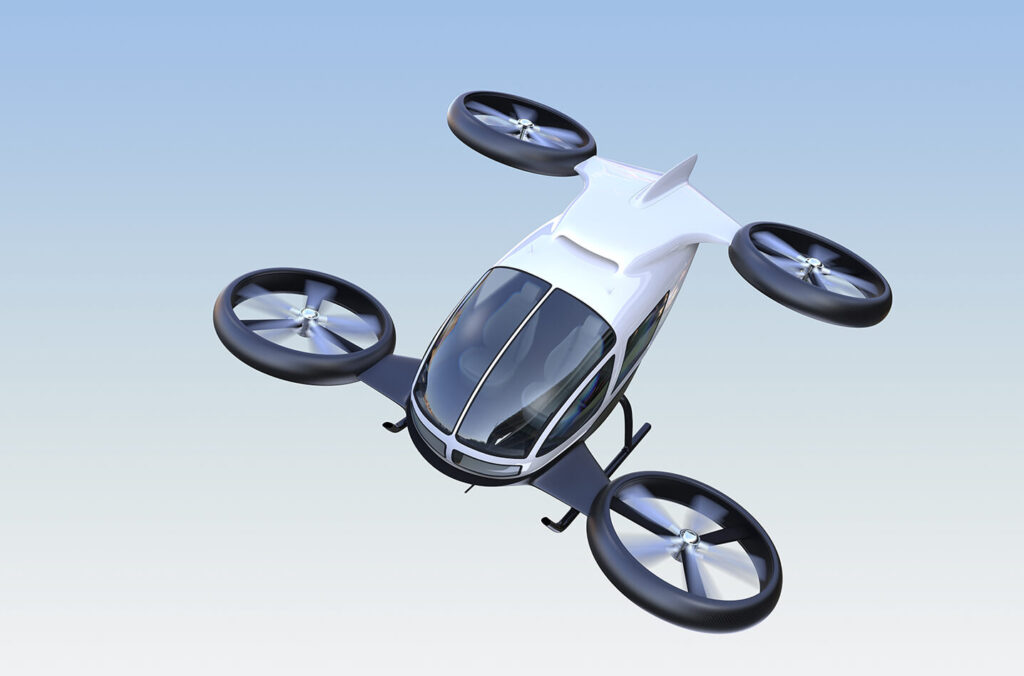
This is the first of a two-part series covering a panel discussion on international cooperation for enabling advanced air mobility. The AUVSI and the FAA hosted the discussion. (Photo: NBAA)
This week, a panel of experts discussed the challenges and opportunities associated with cooperating internationally on advanced air mobility, or AAM. Jessica Orquina, Manager of the Implementation Branch for the FAA’s Safety & Integration Division in the UAS Integration Office, served as the moderator for the panel discussion.
“AAM is a new aviation ecosystem that will be enabled through innovative technology,” Orquina remarked. “At FAA, we have a long history of safely bringing new technologies into aviation. We are committed to safely integrating AAM as well as drones into our aviation system in line with our safety standards.”
She noted that many of the FAA’s current regulations allow AAM aircraft to meet strict safety standards through innovative means. “We use the same data-driven approach when evaluating these complex systems that have created the safest aviation system in the world. The FAA is taking a risk-based approach to certifying AAM aircraft and does not have a set timeframe. Safety drives the process and the timeframe.”
Orquina added that the FAA is working with international partners to adopt common certification and integration standards from other countries as AAM is being defined. The agency is also pursuing harmonization and viable standards to enable the industry to thrive.
Pulkit Agrawal, Principal Certification Engineer (UAS/UAM) at Honeywell, spoke about some of the opportunities in the AAM industry. The company believes in the vision of efficient air transportation—electric air taxis that can complete a 100-mile trip in 45 minutes—as well as same-day package delivery via drone. While Honeywell is not making the aircraft themselves, “we do make the brains and muscles of these aircraft” to enable them to fly, Agrawal explained. Honeywell produces avionics systems, fly-by-wire systems, and thermal management solutions like the Micro VCS (Vapor Cycle System).
Most of the OEMs involved in the AAM industry want to enable operations in more than one country. It’s necessary for the certification process to be straightforward, Agrawal said, “and harmonization is the key for bringing the validation into different countries.”
He commented that Japan has a significant role to play in bringing certification authorities together to enable harmonization for AAM. This is because of the 2025 World Expo taking place in Osaka, where many OEMs hope to demonstrate their aircraft’s capabilities and launch commercial AAM flights.
Agrawal mentioned that Honeywell participates in various working groups, such as within ASTM International, to contribute to the development of certification standards. “Our main focus in these working groups is to contribute from our side and also to make sure that these standards [enable] harmonization,” he said. “The way we move is changing again, and harmonization is key to improve AAM standards.”
During the panel discussion, the FAA’s Jessica Orquina asked Amit Ganjoo, founder and CEO of ANRA Technologies, his perspective on what is necessary to promote growth and establish growth for a sustainable AAM industry. “We have to look at the whole ecosystem, not just the aircraft,” he said.
“How does the aircraft integrate into the ecosystem? What are the infrastructure requirements, the supplier requirements, and the supply chain requirements that make it all work?” This includes airspace integration as well as integration into how legacy traffic operates.
Different entities have developed their own concept of operations, or ConOps, including the FAA and multiple OEMs. Ganjoo remarked that the future AAM ecosystem will require integration of multiple kinds of aircraft at the same vertiports or airports. At airports and in the airspace today, he explained, air traffic is not made up of only Airbus’, Embraer’s, or Boeing’s aircraft.
“There is a need for harmonization in terms of the concept of operations,” he stated. “There are subtle differences at a global level between whether it’s North America, Europe, or Asia Pacific, but there are a lot more commonalities than differences.”